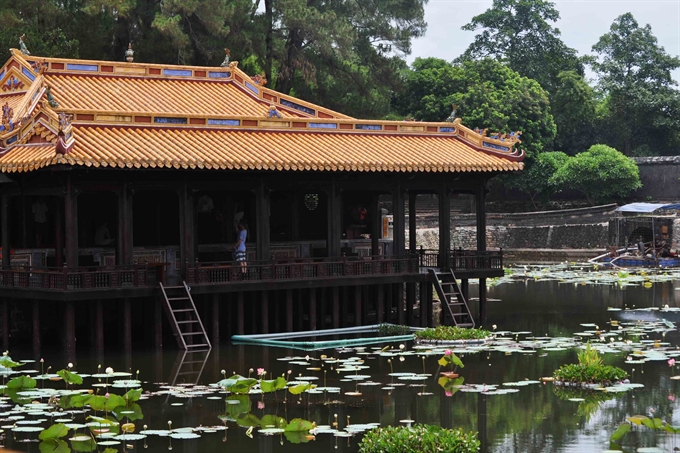 Life & Style
Life & Style

Ongoing conservation efforts have saved 136 heritage buildings of the Nguyễn Dynasty (1802-1945) in Huế - including palaces, pavilions and tombs - but experts say more work is needed.
 |
| Historic preservation: A newly restored building within the mausoleum complex of emperor Tự Đức. — VNS Photo Phước Bửu |
THỪA THIÊN - HUẾ — Ongoing conservation efforts have saved 136 heritage buildings of the Nguyễn Dynasty (1802-1945) in Huế - including palaces, pavilions and tombs - but experts say more work is needed.
Naoaki Furukawa of Japan’s Waseda University said conservation efforts should include both heritage buildings and the surrounding environment.
Furukawa, who has worked with the Huế Monuments Conservation Centre to preserve the environment around the royal mausoleums in Huế, said the heritage site includes rice paddies, trees, rivers and mountains.
“These should all be preserved properly to protect the scene of each site, not just the buildings,” he said at a conservation conference in Huế last weekend. "The mausoleum of the dynasty’s first emperor, for instance, included mountains and a river branch, with no fencing between the landscape and constructed buildings."
Furukawa said teaching communities about the importance of heritage sites could get them involved in preserving the surrounding environment.
Recent reports by local researchers documented that some buildings in Huế lost their authenticity after restoration, due to inappropriate conservation methods.
For example, people from different regions of Việt Nam use various methods of carving. So Huế buildings restored by artisans from the North might lose their fine patterns due to regional differences in carving styles.
Mitsuhiko Nakamura, a Japanese architect who took part in the conservation of old wooden structures in Kurayoshi City, Japan, hailed the preservation of authenticity in each restored building.
Nakamura said conservation efforts should take into consideration the risks of tourism and industrialization for best results.
Meanwhile, Vietnamese experts called for compliance with existing legal frameworks for recognized global heritage sites.
Assoc Prof Đặng Văn Bài, deputy chairman of the Việt Nam Association of Cultural Heritage, said conservation work conducted on heritage buildings in Huế needs to be considered carefully, including the conservation request, rules for the work and related scientific bases.
“This will help preserve Huế’s heritage, which is meaningful globally, as well as to Việt Nam,” he said.
According to the conservation centre’s director, Phan Thanh Hải, the conservation of 136 buildings has already cost 1.2 trillion Vietnamese đồng, or US$54 million. The funding came from State and provincial budgets and international assistance.
Nguyễn Văn Cao, chairman of the People’s Committee of Thừa Thiên - Huế Province, which includes the former imperial capital of Huế City, pledged proper development policy and good use of financial resources for future conservation work. — VNS









